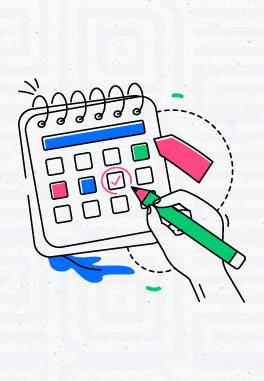Before jumping into the article, I would like to make a very quick introduction to product codes. Very basically, the universal product code is the unique identifier and digital fingerprint of your product. These codes can be used by every retailer and every marketplace to help them to keep track of sales, how much a product has sold, have better inventory management. There are main product codes for e-commerce retailers such as UPC, EAN, GTIN, JAN or ASIN. You’ll see the usage area of them later in the article.
A well-structured e-commerce operation needs an orderly product tracking and identification process. That’s why the standardization should be needed to keep all things in order. Think about the situation where there are different identification codes for each product. There may be a risk of conflict and huge confusion as there are going to be duplicate numbers.
One of the major benefits of standardization through product codes is having better warehousing processes and product tracking. With the digital and standardized ID of products, retailers are able to track and manage the inventory more accurately than manual counting, to know when more item is needed in warehouses. Or, you can develop internal tracking systems with the aid of standardized codes which allows you to track products through production to distribution to retail stores and even into consumer homes. That’s how you can gain more market discipline.
Standardized universal product code also enables customers to have a better experience. Online shoppers really want to make instant and quick decisions, especially with the aid of price comparison engines and shopping apps they are able to do it very quickly. So, your main duty is to facilitate the buying process and make it smooth for your end-users as possible. One way to do this is to use the international product codes like UPC, EAN, GTIN, JAN or ASIN for each and every product you manufacture, sell or distribute. They can help you to design a great tactic to make a smooth shopping journey. The more barriers you put in the way of your visitors, the less likely they will buy from you.
Now let’s dive into different product codes.
Global trade item number (GTIN)
GTIN (Global Trade Item Number) is an international code for managing millions of product references worldwide. The code is generated by 13 digits. There might be different versions of this code depending on the type of product sold, and the country of sale such as;
- UPC
- EAN
- JAN
- AISIN
Search engines are now a crucial tool that is not only used by online shoppers to find products from e-commerce retailers, but also on marketplaces to search for and compare products. GTIN has an immense role to facilitate that process. By adding them in the product listing, the chance of being prominent on the marketplace will increase which leads you to get more organic traffic. For example, Google Shopping agreed to make GTIN codes essential in May 2016. According to Google, products including GTIN codes have a 40% higher CTR and generate 20% more sales.
Universal product code (UPC)
As you can understand from its name, this coding is universal. Every e-commerce retailer and the marketplace can use the same code for a specific item.
It is started with the 12-digit Universal Product Code (UPC) and commonly used in the United States, Canada, United Kingdom, Australia, and other countries. A universal product code (UPC) can be applied to every category of products you can sell in your store, from electronics and clothing to food.
In order to obtain a UPC for your products, you first need to register with GS1 and get your company code. This code will be prefixed to all your products to help identify you as the seller.
European article number (EAN)
European article number, in short EAN is a 13 digit code for Europe. There is an obvious correlation with UPC that any UPC can be converted into an EAN simply by adding a zero to the front.
Both UPC and EAN codes help in distinguishing one product from others. These numbers are unique and describing the attributes of the products with the identification marks. They can represent details like:
- The type of product
- Price, weight or color
- Manufacture
- Country code
- Other product-related data
Japan article number (JAN)
Japan uses the same standard as EAN, calling it a Japan Article Number (JAN). JAN is used in Japan starting with different digits than the ones used in Europe, so, they are globally authorized and unique.
Amazon standard identification number (ASIN)
Amazon is a retail giant having millions of transactions a day and geographically diverse. That’s why the need for having a unique identification number for the products they’re selling has become mandatory. So, as a retailer, you can either link your product with an existing ASIN or you can get authorization for your brand on Amazon and get new ASINs. It’s a 10-digit unique identifier and used for product-identification within Amazon organization.
ASIN numbers are crucial in managing and tracking the product listing on Amazon. Having the ASIN will not only let your products easier to find by marketplace shoppers but will also protect your products from counterfeits.
Frequently Asked Questions
Universal Product Code is a symbol designed to standardize global business communication. It’s widely used in North American countries.
Depending on the country your business operates in, you might need one or more product codes. For example, GS1 is the provider of the UPC, which is the primary code used in Canada and the U.S.
Stock keeping unit is the number assigned to different products for better inventory management. A product’s size, color, materials, packaging, etc. can be seen in its SKU code.



How can you tell what country the product come from using the code